Chaeseokgang Geological Site
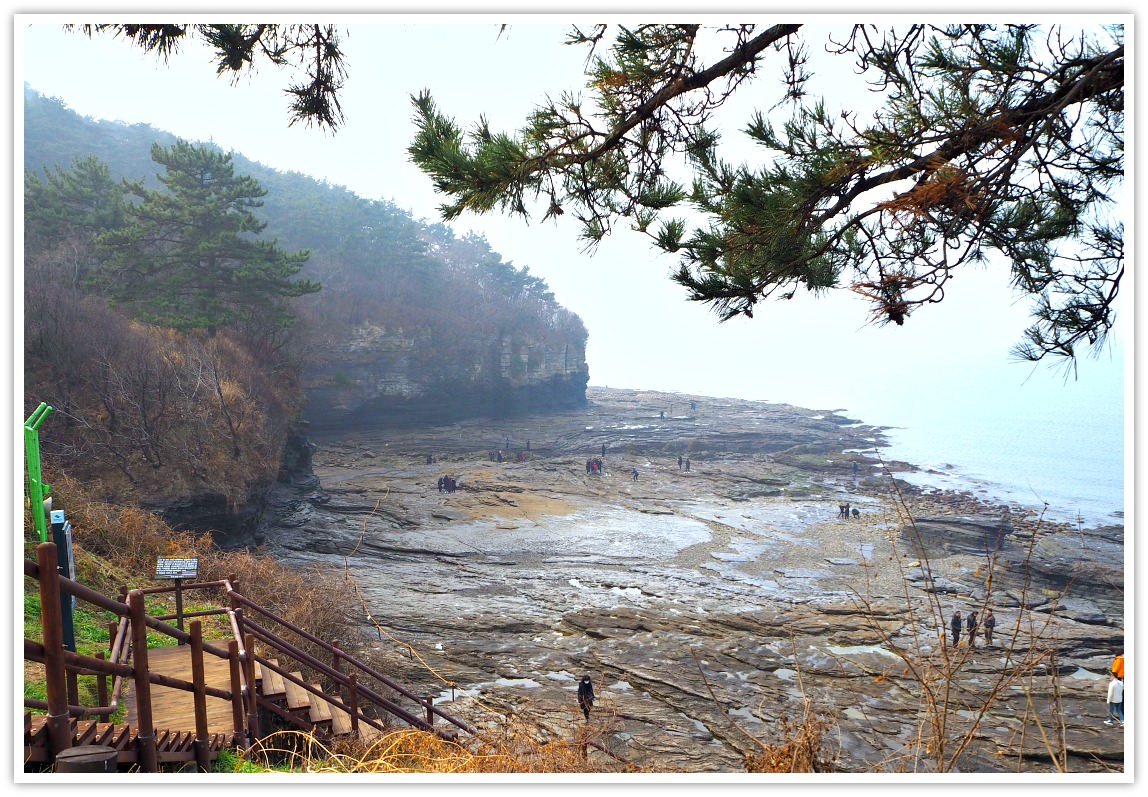 Entrance to the ancient geological site
Entrance to the ancient geological siteIntroduction
In Buan County, Chaeseokgang Geological Site is one the places one should not miss to explore.
This unique site consists of sedimentary paleontological deposits from about 10 million years ago. The rich biodiversity is home to several species of plants and animals, including commonly found ones like pine trees, rabbits, black bears, and Korean deer.
As the site is located in a mountainous area at an altitude of 450m, visitors can enjoy the beautiful view of the valleys and mountains while exploring. Furthermore, the area is famous for its hot springs which can provide soothing relaxation after a days exploration of the geological site.
All in all, Chaeseokgang Geological Site is an worth visiting place to experience nature’s wonders and beauty! With its various activities like hiking, sightseeing, and hot springs, it is no wonder why it is a popular destination for both locals and tourists alike.
So come visit Chaeseokgang Geological Site and explore the wonders of nature! You surely won’t regret the experience.
It's not only about the natural beauty you can enjoy in Chaeseokgang Geological Site but also the history behind it. This geological site is considered to be one of Korea’s oldest sites and has been around for thousands of years. It is a testament to the Earth’s-changing landscape and provides insight into how nature shapes planet.
Aside from its historical significance, Chaeseokgang Geological Site provides an incredible opportunity to observe the unique terrain and rock formations that can be found around it.
The diverse range of colours, shapes, and textures make it an exciting place to explore. Plus, with its crystal-clear waterfalls and breath-taking views, you will never tire of this stunning location!
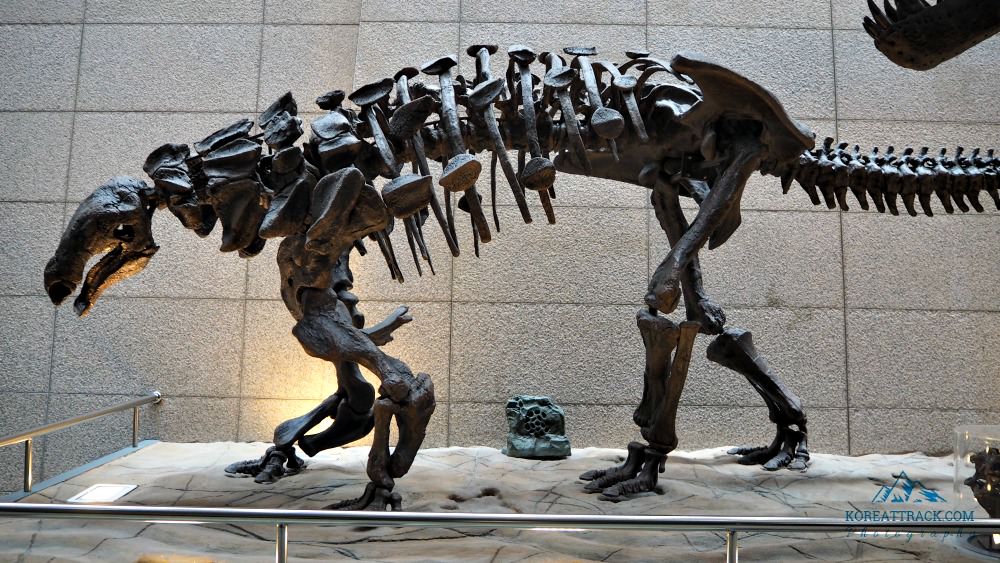 A skeleton of a dinosaur at Daejeon Geological Museum.
A skeleton of a dinosaur at Daejeon Geological Museum.So come visit Chaeseokgang Geological Site, and learn more about the unique geology and history of this special place! With its incredible beauty and fascinating past, it is sure to provide you with an unforgettable experience.
Beside its amazing geological features, the Chaeseokgang Geological Site has many other interesting attractions to offer. Hike through the forest trails surrounding the site and discover the abundant wildlife that inhabits the area.
With its rich biodiversity, you are sure to come across some fascinating creatures! Plus, marvel at the stunning sunsets which can be seen from various points around the park.
For a truly unique experience, take part in one of the nearby caving tours offered by local companies...
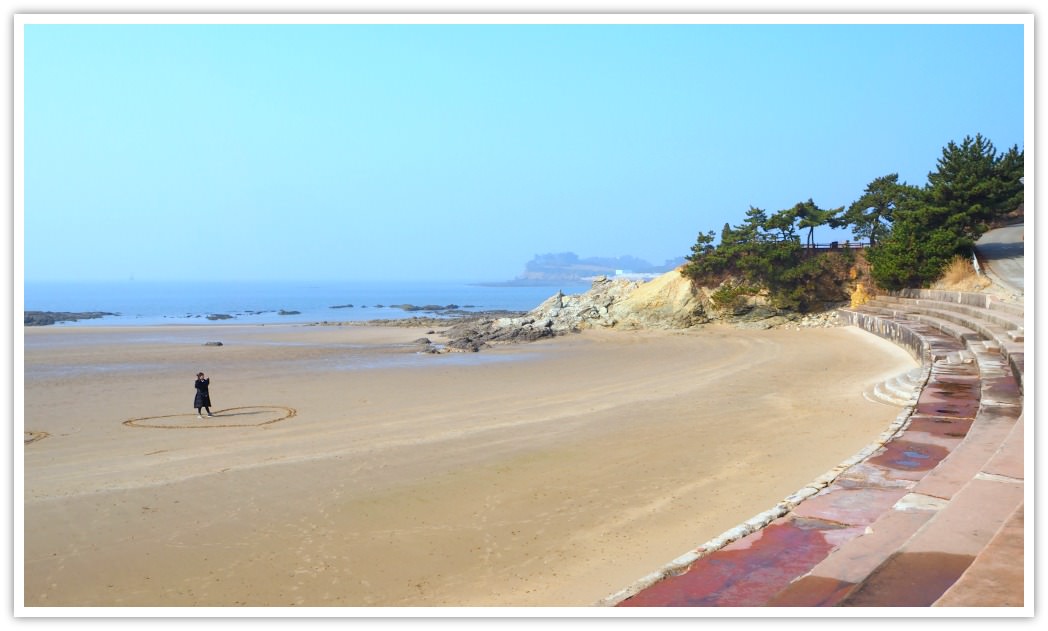 Gyeokpo Beach is a beautiful beach area close to Chaeseokgang.
Gyeokpo Beach is a beautiful beach area close to Chaeseokgang.mesozoic chaeseokgang geological site
Chaeseokgang geological site cliffs is a natural site composed of millions of years old rocks. The site is located in Gyeokpo-ri, Buan County, Jeollabuk-do, South Korea.
This highly researched geosite is attracting thousands of visitors both domestic and international. The stratified geological rocks have layers of various shapes and formations. Such features are quite interesting to see.
I visited the place and was surprised myself to see them. What strikes me the most is the layers of rocks that form like slates or slabs lying on the ground—they are millions and billions of years old!
I explored this amazing site in the morning. (And by the way, you can see the rocks only twice a day when the seawater recedes—during low tides.)
FACTS: You will find rocks of Paleoproterozoic (1.8-9 billion years ago), granites of Jurassic Period of Mesozoic Era (170 million years ago), volcanic & sedimentary rocks of Cretaceous Period (about 87 million years ago, dinosaur footprints fossils inside rocks, etc.
Cretaceous Period: This era 145 million years ago and lasted until 66 million years ago. During this time, many species of dinosaurs lived, including T-Rex, Triceratops, Stegosaurus and Velociraptor.
It was also during this period when flowering plants began to appear. The climate of the Cretaceous Period was warm and humid, with shallow, warm seas covering much of the land. The landscape was lush with coniferous forests and ferns.
At the end of this period, a major extinction event occurred that caused the disappearance of over 75% of all species living at that time. This included dinosaurs who had been the dominant animals on earth for over 150 million years. It was this extinction event that allowed mammals to become the dominant species on earth in the following geological period, the Paleogene Period.
The Cretaceous Period is important for many reasons. First, it marks one of the biggest mass extinctions in Earth’s history and changed life on our planet dramatically.
Second, during this period, many of the plants and animals that we find today first appeared. The flowering plants, grasses, and angiosperms evolved during this time, as did the modern birds and mammals. Reptiles such as snakes, lizards and turtles also began to spread during this geological period.
Thirdly, the Cretaceous Period saw major changes in the Earth’s climate and geography, with sea levels rising significantly. Plate tectonics also played an important role during this time, resulting in the formation of mountains, valleys and basins.
Finally, this period is known for its vast fossil deposits which have provided us with invaluable information about the evolution of life on Earth.
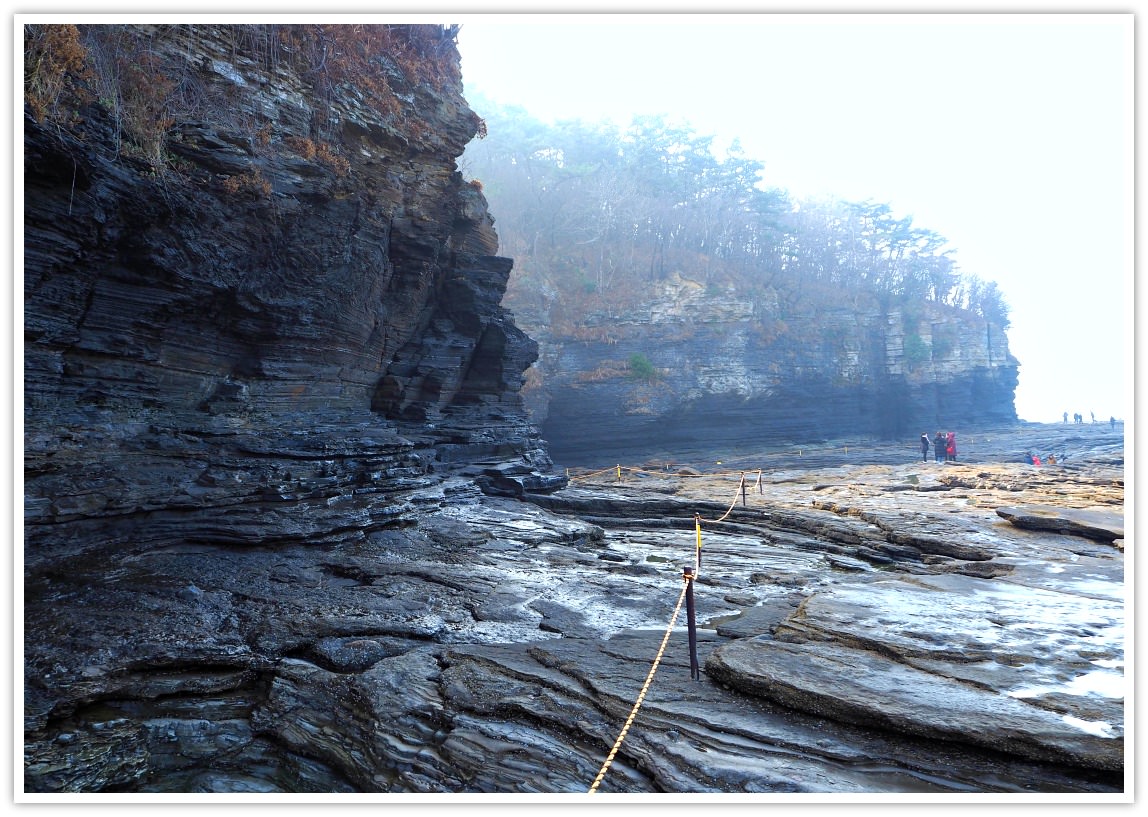 Chaeseokgang Cliffs
Chaeseokgang CliffsPaleoproterozoic Era: A Look Into The Past
The Paleoproterozoic Era (2500-541 million years ago) was an important period in Earth’s history. During this era, many of the processes that shaped our planet began to take shape. Life on Earth during the Paleoproterozoic Era consisted mostly of single-celled organisms and cyanobacteria. The atmosphere also began to change during this period, as oxygen levels in the air rose due to photosynthetic activity by the cyanobacteria.
The shifting environment of the Paleoproterozoic Era led to an increase in biodiversity over time. This new life included a range of creatures from primitive algae to multicellular animals. As life diversified, ecosystems began to form and the land was shaped by erosional forces like rivers, wind, and glaciers.
The Paleoproterozoic Era also saw the emergence of some of Earth’s oldest mineral deposits and fossils. Most of these deposits were formed in sedimentary rocks, which were created by the accumulation of sediments over millions of years. These rocks contain valuable information about Earth’s past, giving us a glimpse into how life evolved during this important period in Earth's history.
The Paleoproterozoic Era was also marked by extreme glaciations and a drop in sea level. This had a profound effect on the Earth’s climate and ecosystems, resulting in major shifts in biodiversity. The most significant event to occur during this period was the Great Oxygenation Event (GOE). This event changed the atmosphere by dramatically increasing oxygen levels, making it possible for more complex life forms, such as animals, to evolve.
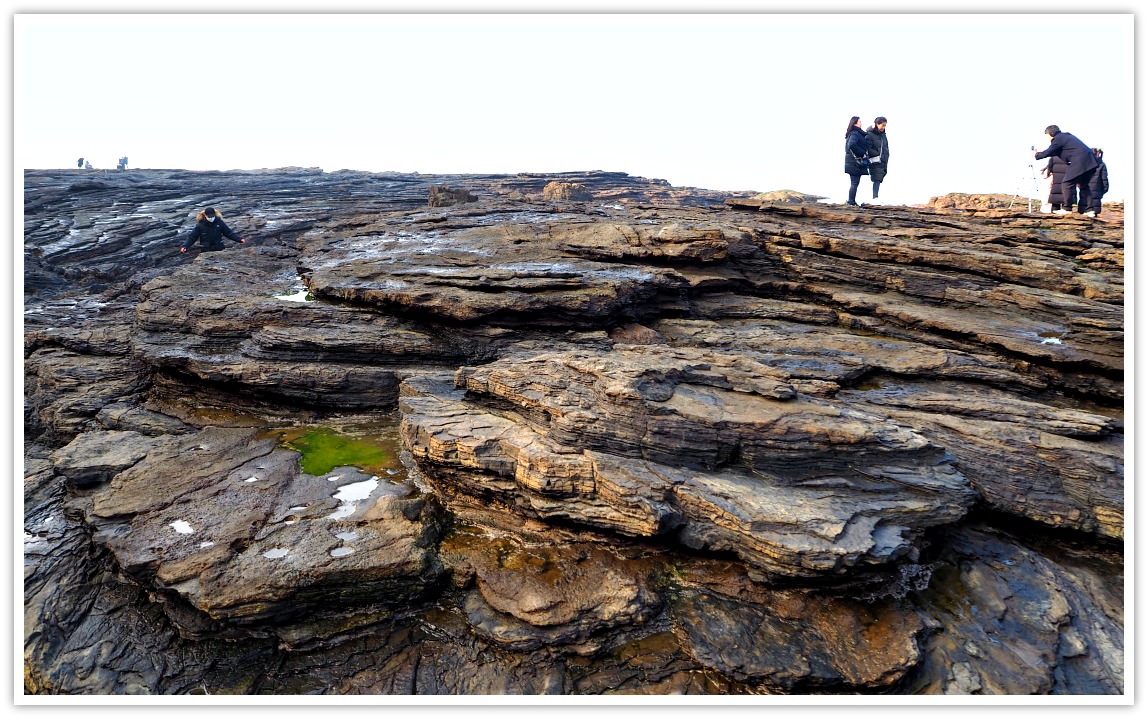 Slabs of Chaeseokgang rocks
Slabs of Chaeseokgang rocksMezoic Era
The Mezoic Era is an important time in the history of our planet. It was a period when life on Earth was beginning to diversify and become more complex. During this era, the first dinosaurs appeared, as well as many other organisms that we now see in the fossil record.
This period is divided into three parts: the Triassic, Jurassic and Cretaceous. During the Triassic period, the first dinosaurs evolved from small reptilian ancestors. In the Jurassic period, dinosaur diversity increased as some species grew larger while others became more specialized in their diets and habitats.
The last period of this era, the Cretaceous, is famous for being when some of the largest dinosaurs lived and when the asteroid that led to their extinction struck Earth. As you can see, the Mezoic Era is a fascinating and important part of our planet's history.
Learning about it can help us gain insight into our own evolution and how species have changed throughout time. We are only beginning to understand this pivotal period in Earth's history, but each new adds to our understanding.
With fossil and rock evidence, as as other research techniques, we learn more every day. As we continue to explore, who knows what other secrets the Mezoic Era holds!
The Mesozoic Era is one of the most studied eras in Earth's history. Scientists have studied the era for centuries, but with new technology and research methods, we are able to delve deeper into this unique period than ever before.
From its beginnings around 252 million years ago to the extinction event that marked its end 66 million years ago, the Mesozoic Era was a time of dramatic change and amazing species.
Through fossil analysis, genetics studies, and sophisticated data evolutions, we have been able to uncover a wealth of information about the time period. From dinosaur evolution and extinction events, to massive geological shifts, the Mesozoic Era has left us with an abundance of knowledge that continues to astound us as more discoveries are made.
As researchers look deeper into the Mesozoic Era, they uncover incredible details about the species that lived during this time. From well-known dinosaurs such as Tyrannosaurus Rex and Triceratops to lesser-known creatures such as Plesiosaurs and Pterosaurs, the variety of life that existed during this time is truly remarkable.
Recent advances in technology have provided us with a closer look at the fossils left behind by these ancient creatures and continue to shed light on their habits and behaviors.
The Mesozoic Era has also left its mark on our modern world in ways we may never fully understand. Learn more about this fascinating era and the clues it has left behind to understand Earth's distant past.
From the vast array of prehistoric creatures that roamed the land to the plants and trees that grew in abundance, there is much to learn from our Mesozoic ancestors! With each new discovery, we come one step closer to uncovering the mysteries of Earth's past.
The Mesozoic Era was an age of incredible diversity, with some species becoming extinct while others evolved and thrived. This unique period in Earth's history also saw the rise of new technologies that would shape our world as we know it today.
From the earliest forms of flight to the development of ocean navigation, the Mesozoic Era gave us many of the tools and technologies we rely on today.
By studying the Mesozoic Era we can better understand not only Earth's current ecosystems, but also how they may have changed or evolved over time. We can learn about the forces that shaped our planet in the past and how these forces are still impacting us today.
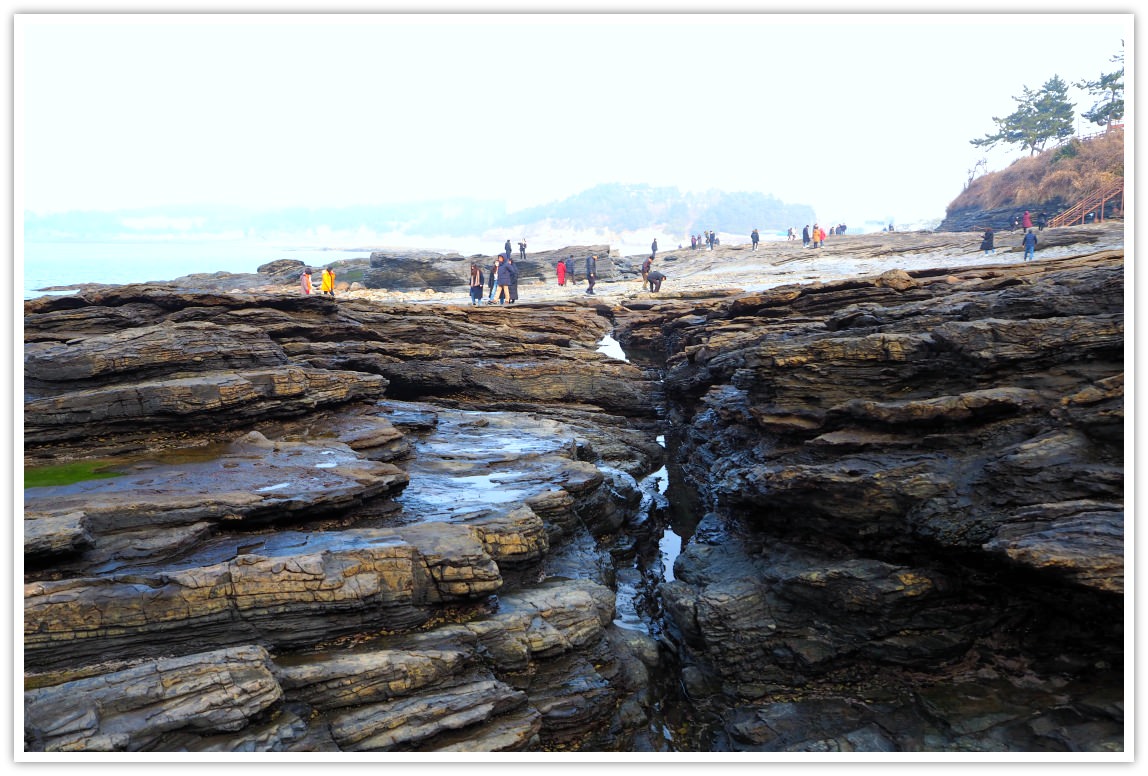 Visitors over rock formations
Visitors over rock formationsTheir shapes, sizes, diameters, and other strange features seem like an alien planet to me. I could only think of movies depicting the uncharted and distant planets where nothing or no life could exist.
Anyhow, observing the rocks and the surrounding is quite entertaining, aside from feeling happy and proud realizing that I was walking on top of ancient elements of the Earth I am living in. Sort of mind-blowing experience!
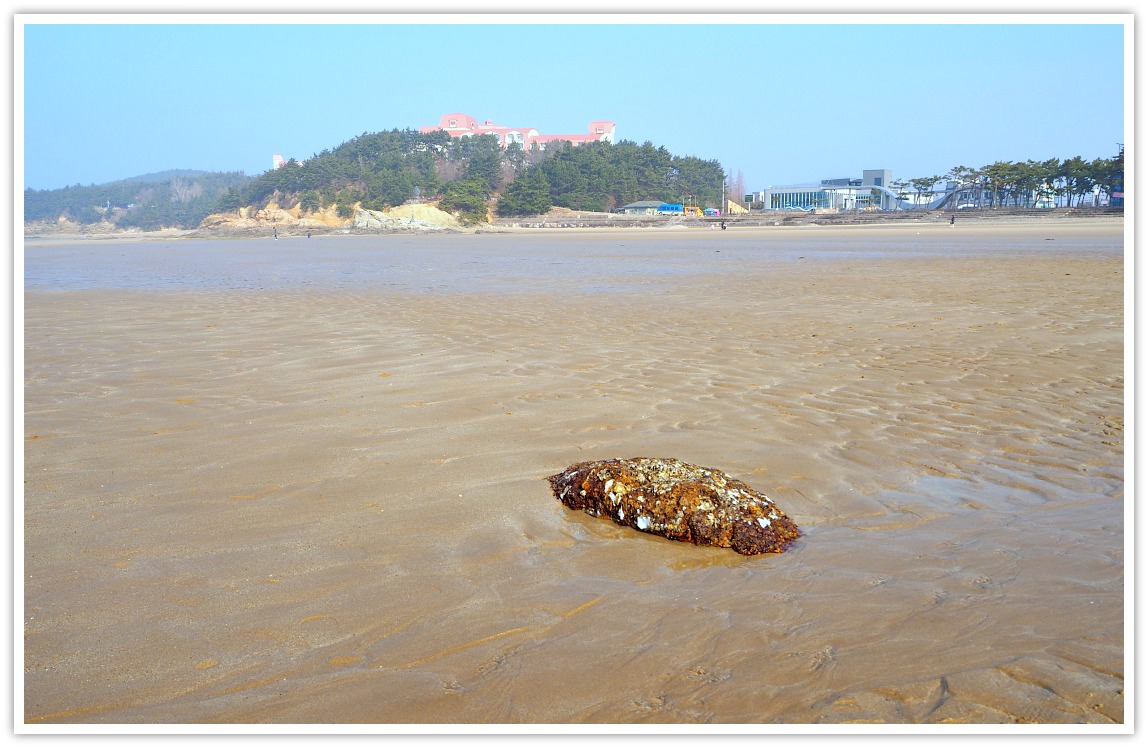 Gyeokpo Beach beside Chaeseokgang Cliff
Gyeokpo Beach beside Chaeseokgang CliffWhat is more interesting about the Chaeseokgang geological site is that it is like a picture with a perfect background: the blue sea of the West Coast.
Yes, that is what adds to the beauty of the geosite (shortened form for ‘geological site’).
Okay, with such nice description (and photos?), you will ask…
Who Can Travel Here?
I would say anybody who can walk with no problem. Ideally, children around six years of age and adults would have no trouble treading over the rocks.
However, I should say that tiny kids would find it difficult. But with an adult or parents would be fine.
Grandpas and grandmas who can walk without any support will do fine here. But they should be watched by younger guys just in case. Also, there are some safer spots where they can stay and simply survey the place.
Slippery in some areas! So choose your next steps carefully.
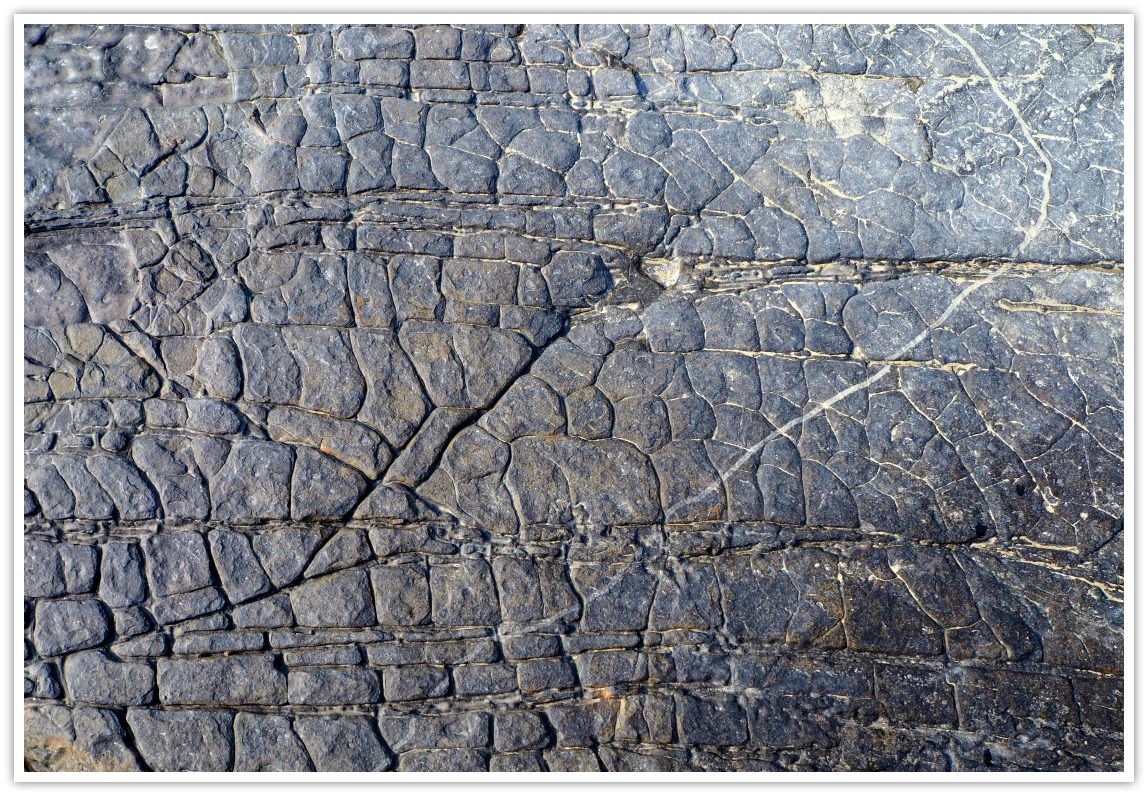 Rock formation that was formed millions of years ago
Rock formation that was formed millions of years agowhat to see
As above-mentioned, the cliff and rocks on the ground are millions of years old. I guess you don’t need more words. Just see the photos I took. There are caves on the cliffs being carved by the sea waves as well.
Sandy Beach Area
Just right beside Chaeseokgang Cliffs, you will not miss the enticing views of Gyeokpo Beach. Yes, just like in the photo, it is wide and beautiful. It is surely great for swimming during the summertime. (Photos were taken during winter time).
Just right above the Chaeseokgang Cliffs, you will find a resort facility. They accept guests for as long as you want to stay.
Wide & Serene Open Sea
I believe that the wide-open sea is perfect during the summer holidays for various exciting activities. No, I have not seen any water skis or speedboats (yet). However, I’m confident that this beach area is pack during summer.
Sunset Vista
I have not witnessed it, but I’m pretty sure that the sunset from this vantage point is phenomenal!
Everyone says that sunset view in this part of the peninsula is astounding.
Other Hiking Trails
There are recommended hiking courses along this side of the national park. You can start from this cliff or the beach and hike towards the south where you will discover more beaches, and other tourist attractions (see below).
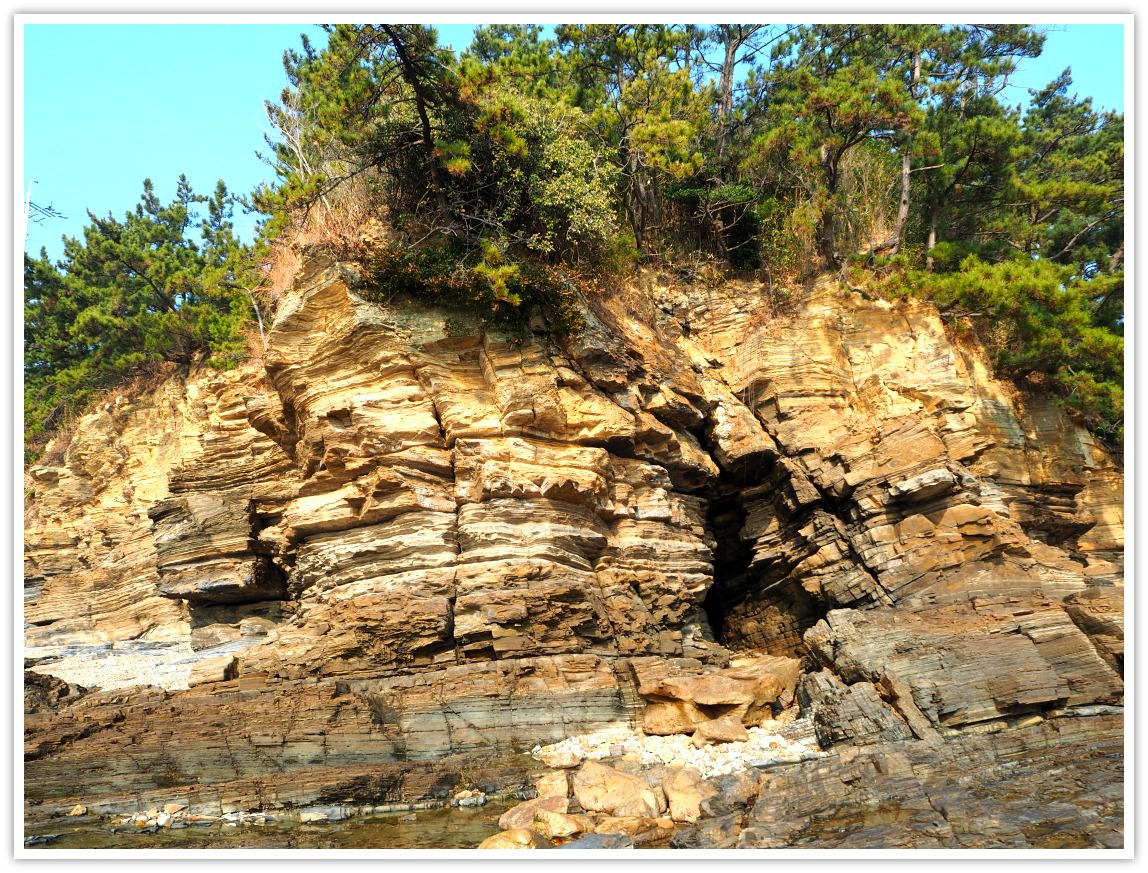 Geological sites with layers of rock formations
Geological sites with layers of rock formationswhere to stay
Around Gyeokpo-ri, you can easily find accommodations: pension houses, condos, hotels (condo style, which means they have cooking facilities inside the hotel room).
Also, there are family houses that offer their rooms for rent. They call in Korean as ‘minbak.’ They get permission from the local authorities to accept guests. Not all, but some are like the B&B (bed and breakfast).
Many of these accommodations are located around Gyeokpo-ri Bus Terminal. (Note: buses stop here only drop off and pick-up passengers but do not idle here).
Aside from the Gyeokpo-ri central area, you can also stay near the beach areas where accommodations are offered but limited in number.
If you decide, you can pitch a tent in a designated camping area which is near the beach. Gosapo Beach and Byeonsan Beach are examples of such camping areas. Gyeokpo Beach is not a designated area for camping.
Now, if you really want to get a room during peak season, book it ahead of time. I recommend staying around the bus terminal area of Gyeokpo-ro where most of the exciting adventures begin!
how to get here
You can get to Byeonsanbando National Park, where Chaeseokgang geological site and other tourist attractions are located, from anywhere in Korea. And the best way to get there is…
- Get to Buan Bus Terminal (from Gangnam, Incheon, or any point of origin)
- Take a bus from Buan going to Gyeokpo-Ri (yellow bus). It will take around 30 minutes only.
- Get off at Gyeokpo Bus Terminal and walk towards Chaeseokgang Cliffs area. Asking somebody would be the fastest way to get your directions right.
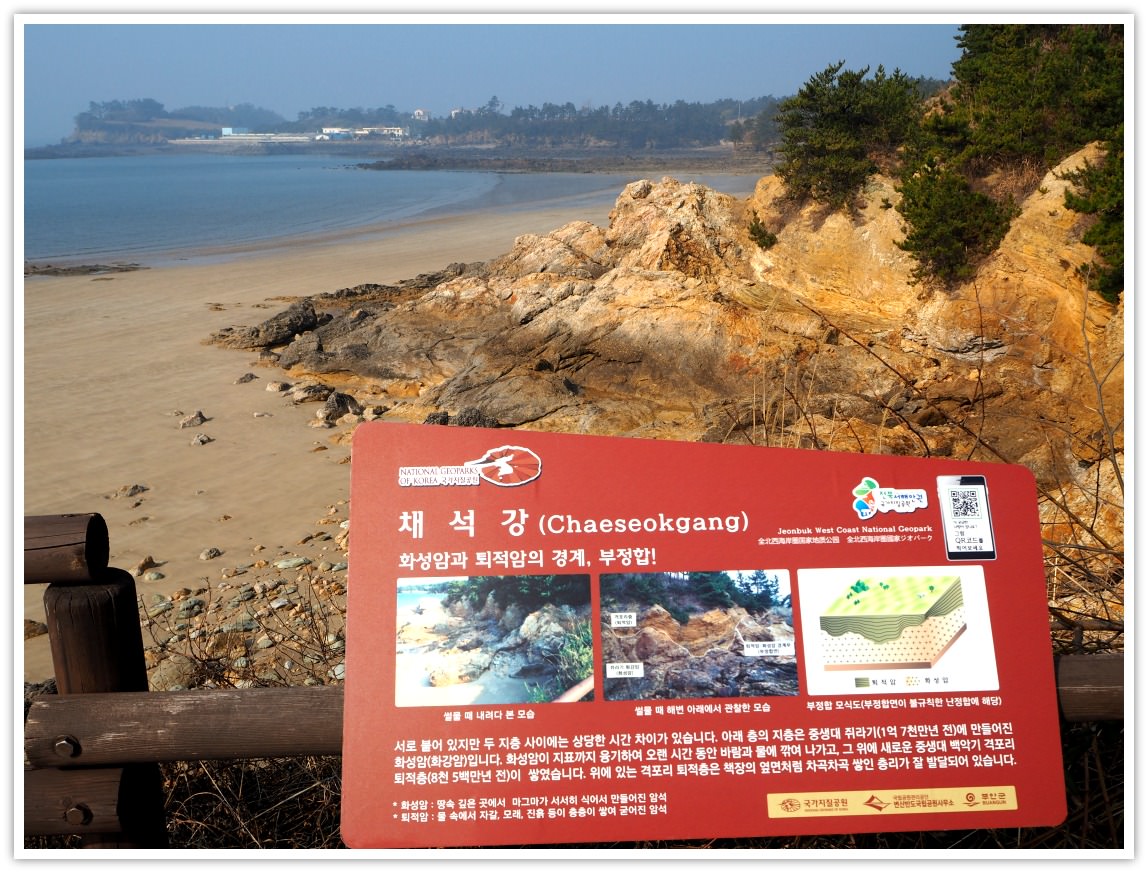 Chaeseokgang Site
Chaeseokgang SiteFor further information
The following details can be useful if you need more. Hope these can help. Otherwise, my description on this page is sufficient to help you navigate the place. Please, let me know if you have specific questions that I haven’t answered above.
Phone: +82-63-583-2064
Government websites: tour.jb.go.kr, english.knps.or.kr/Knp/Byeonsanbando
Parking Area
Yes, there is a parking space if you are asking. Parking fees will be collected and the amount varies depending on the size of your vehicle and hours (and minutes) you occupy the space.
The rate starts from 500 Won to 1,500 Won per hour. For each 10 minutes extension, there will be additional charges.
Free: entrance to the Chaeseokgang Geological Site
Address: 301-1, Gyeokpo-ri, Byeonsan-myeon, Buan-gun, Jeollabuk-do
Hope this page has been useful to your search. Please, email me if you have specific questions about the place.
Have a great journey!
- Home
- Historical Attractions
- Chaeseokgang Geological Park
Get Exciting Activities
Book one of our exciting activities today to experience the thrill of a lifetime! Take advantage of this opportunity and secure your spot in advance.
Hotel Map Guide
Find your affordable, accessible, and comfortable hotel in Seoul at Agoda.Com. See the hotel map below...
Hotel Booking Guide
Find affordable and amazing hotels on Agoda.com using the search box below. Book now to enjoy great discounts and save!
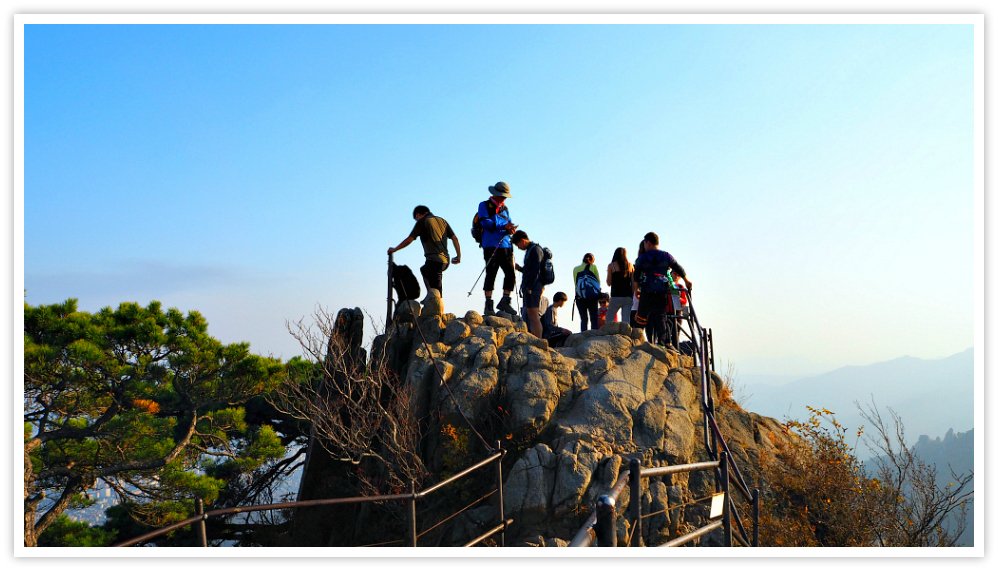
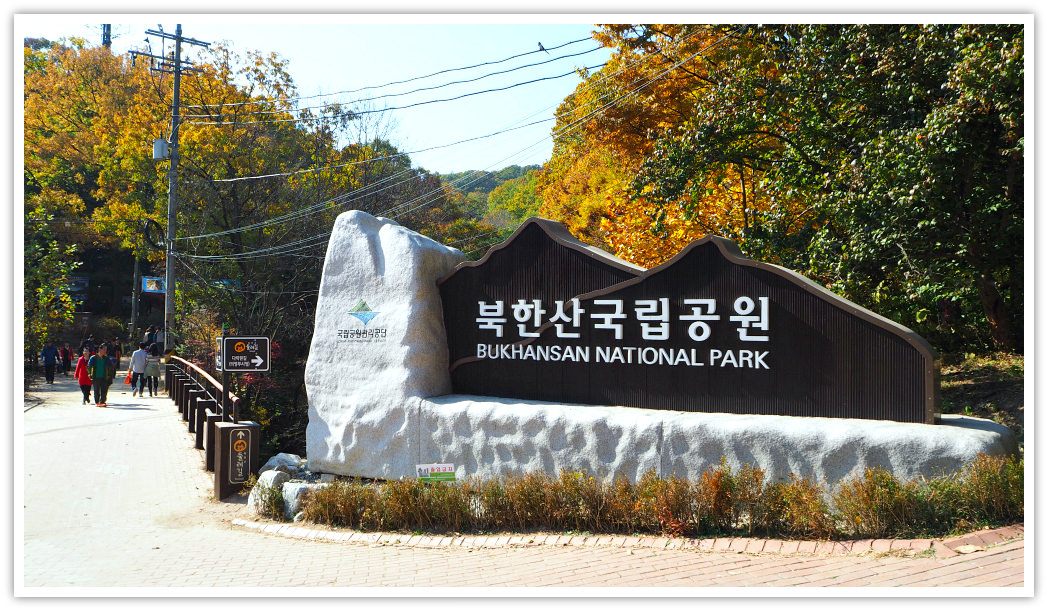
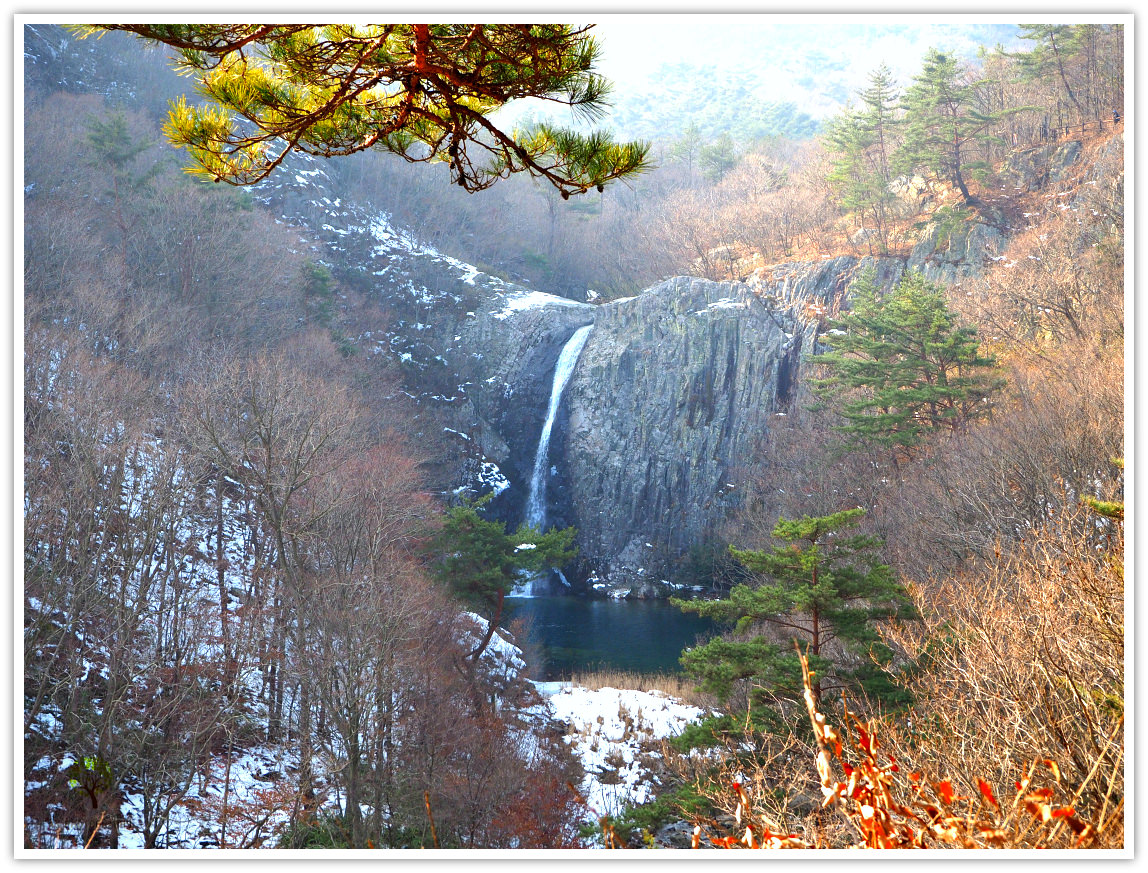




New! Comments
What do you think about this page? Leave me a comment in the box below.